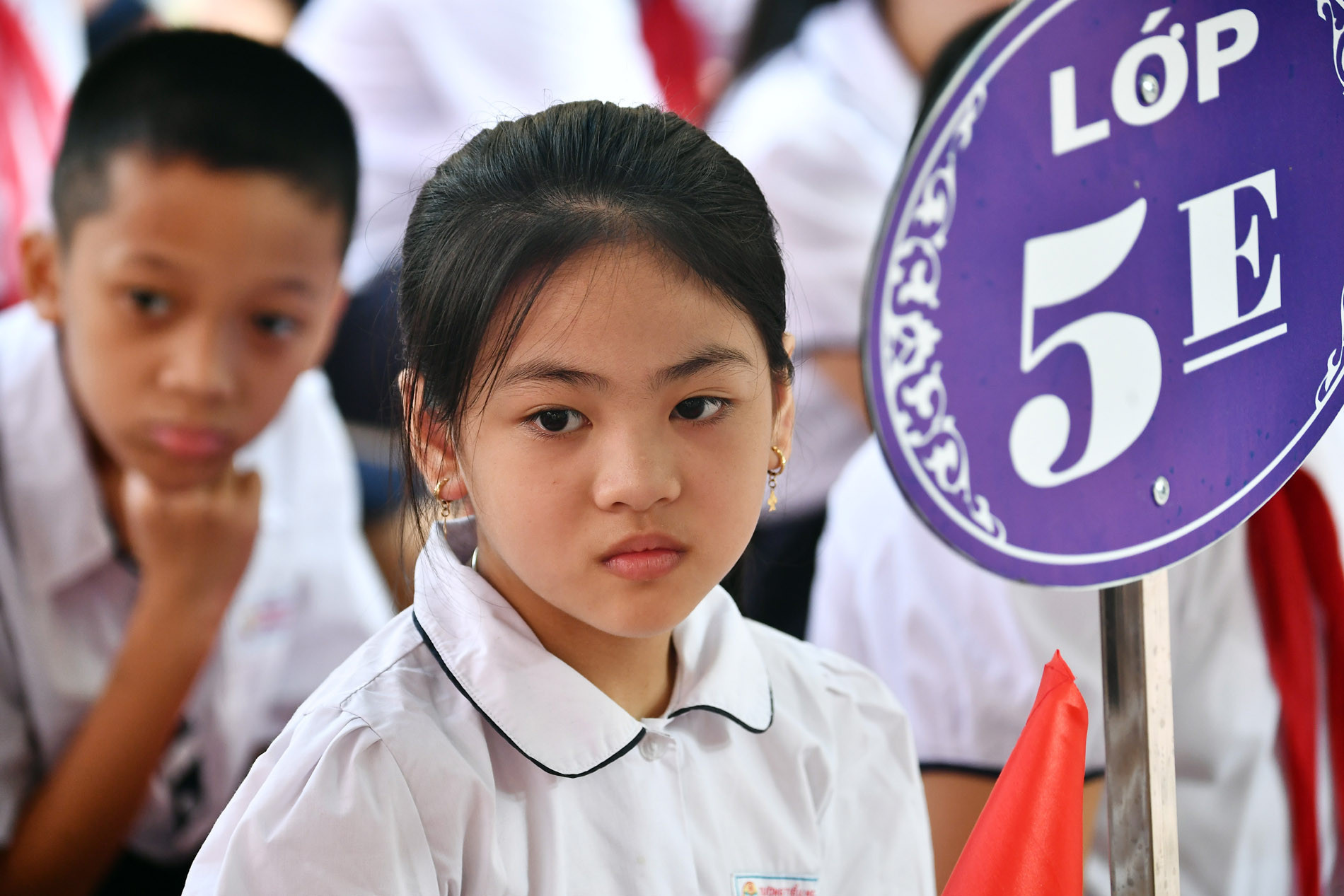
MOET has sent a dispatch to local departments of education and training addressing the tasks for primary education in the 2024-2025 academic year, requesting schools to arrange no more than 35 students for every class and to be equipped with minimum teaching aids.
There must be 1.5 teachers per class and the number of teachers in every school must be high enough to teach all subjects and ensure two teaching sessions per day (morning and afternoon).
The restriction on the number of students in each class is expected to cause difficulties for general schools in Hanoi, where land is expensive and the land bank reserved for general schools is limited.
It is common in Hanoi that each class consists of 50 students and overloading is a problem that nearly all schools have been facing over many years.
Many school headmasters have voiced concern that having no more than 35 students per class is an impossible mission in Hanoi. Parents have said that having 35 students per class is the ideal number, but it is not feasible in Hanoi.
Linh An, a parent from Dong Da district, said her son last year studied in a class with 46 students, and parents were informed that there would be 49 students this year. In other classes, the number of students is at least 45.
“I understand that the overloading will affect the quality of teaching and learning. But we have no other choice. You won’t find any class in Hanoi which has 35 students or lower at public schools,” she said.
Thu Trang, a teacher at a secondary school in Cau Giay district, said she never sees a class where there are fewer than 48 students. The average number of students in each class is 50, and the figure is 60 in specific cases.
“Having 35 students per class is our dream, but there always exists a gap between the dream and reality,” she said.
“The only solution to observe MOET’s instruction on the size of classes is building more classrooms and more schools, and recruiting more teachers as well. However, I am not sure if building more classrooms can be implemented as there is only one more month ahead before the new academic year begins in September,” Trang said.
Education experts also say that Hanoi cannot restrict the number of students in every class of public schools until more land is reserved for building new schools.
After Hanoi builds more classrooms, it will have to think about recruiting more teachers. While schools complain about teacher shortage, they cannot recruit more workers because agencies all have been requested to streamline their staff.
The headmaster of a school in Hanoi told VietNamNet that since there are too many students in every class, teachers find it difficult to remember the names of all students and it is impossible to improve students’ capability.
“In general, there are 50 students per class. Under the current education curriculum, students have 2-3 periods of English a week (45 minutes per period). In such conditions, not all students can practice speaking during a lesson,” she explained.
“The other problem is that students’ abilities are different. Less capable students need additional support from teachers, but this is impossible in the context of the big size of classes,” she added.
The headmaster complained that teachers nowadays are overloaded because in addition to teaching hours and professional skill practice, teachers have to undertake extra work as the number of officers in every school is restricted.
Pham Thi Le Hang, head of the education and training sub-department in Ha Dong district, said in previous years, the district faced difficulties in enrollment because many residential buildings arose while the number of schools did not increase proportionally.
In principle, students at Thanh Ha residential quarter, can register to study at schools in Thanh Oai district. However, as there were not enough schools in Thanh Oai, students flocked to schools in Ha Dong.
Under current laws, six-year-old students must enroll in school, so primary schools have had to place up to 55 students in each class.
Hoang Thanh